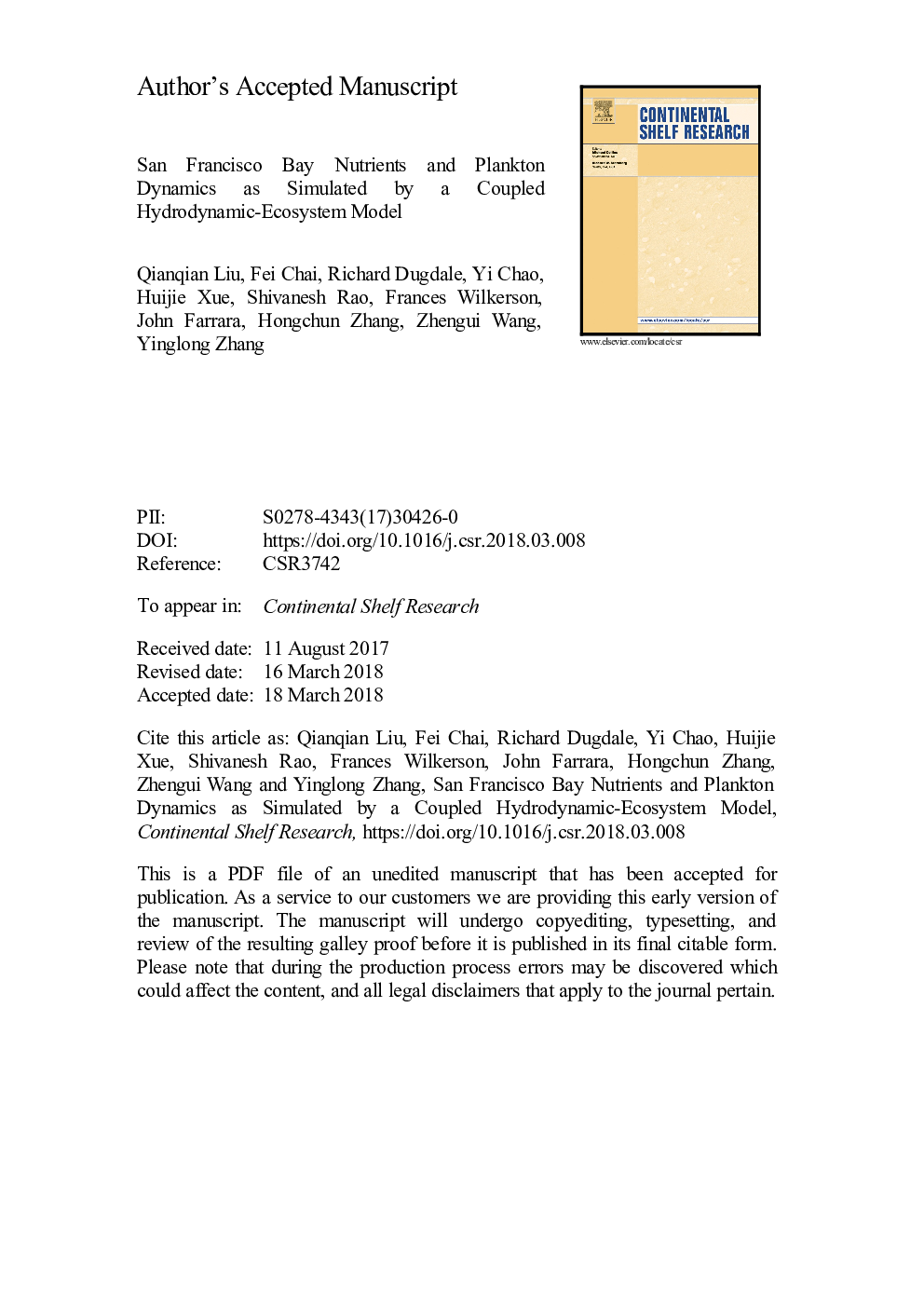| کد مقاله | کد نشریه | سال انتشار | مقاله انگلیسی | نسخه تمام متن |
|---|---|---|---|---|
| 8884043 | 1626052 | 2018 | 63 صفحه PDF | دانلود رایگان |
عنوان انگلیسی مقاله ISI
San Francisco Bay nutrients and plankton dynamics as simulated by a coupled hydrodynamic-ecosystem model
ترجمه فارسی عنوان
مواد مغذی خلیج سانفرانسیسکو و دینامیک پلانکتون به صورت شبیه سازی شده توسط یک مدل اکوسیستم هیدرودینامیکی همراه شده
دانلود مقاله + سفارش ترجمه
دانلود مقاله ISI انگلیسی
رایگان برای ایرانیان
کلمات کلیدی
موضوعات مرتبط
مهندسی و علوم پایه
علوم زمین و سیارات
زمین شناسی
چکیده انگلیسی
An open source coupled physical-biogeochemical model is developed for San Francisco Bay (SFB) to study nutrient cycling and plankton dynamics as well as to assist ecosystem based management and risk assessment. The biogeochemical model in this study is based on the Carbon, Silicate and Nitrogen Ecosystem (CoSiNE) model, and coupled to the unstructured grid, Semi-Implicit Cross-scale Hydroscience Integrated System Model (SCHISM). The SCHISM-CoSiNE model reproduces the spatial and temporal variability in nutrients and plankton biomass, and its physical and biogeochemical performance is successfully tested using comparisons with shipboard and fixed station observations. The biogeochemical characteristics of the SFB during wet and dry years are investigated by changing the input of the major rivers. River discharges from the Sacramento and San Joaquin Rivers affect the phytoplankton biomass in North SFB through both advection and dilution of nutrient (including ammonium, NH4) concentrations in the river. The reduction in residence time caused by increased inflows can result in decreased biomass accumulation, while the corresponding reduction in NH4 concentration favors the growth of biomass. In addition, the model is used to make a series of sensitivity experiments to examine the response of SFB to changes in 1) nutrient loading from rivers and wastewater treatment plants (WWTPs), 2) a parameter (Ï) defining NH4 inhibition of nitrate (NO3) uptake by phytoplankton, 3) bottom grazing and 4) suspended sediment concentration. The model results show that changes in NH4 input from rivers or WWTPs affect the likelihood of phytoplankton blooms via NH4 inhibition and that the choice of Ï is critical. Bottom grazing simulated here as increased plankton mortality demonstrates the potential for bivalve reduction of chlorophyll biomass and the need to include bivalve grazing in future models. Furthermore, the model demonstrates the need to include sediments and their contribution to turbidity and availability of light. This biogeochemical model is suitable for other estuaries with similar ecological issues and anthropogenic stressors.
ناشر
Database: Elsevier - ScienceDirect (ساینس دایرکت)
Journal: Continental Shelf Research - Volume 161, 1 June 2018, Pages 29-48
Journal: Continental Shelf Research - Volume 161, 1 June 2018, Pages 29-48
نویسندگان
Qianqian Liu, Fei Chai, Richard Dugdale, Yi Chao, Huijie Xue, Shivanesh Rao, Frances Wilkerson, John Farrara, Hongchun Zhang, Zhengui Wang, Yinglong Zhang,
